You fly on the wings of the dragon and arrive in a place almost close to heaven. Happiness has found a place and that place is Bhutan.
The Bhutanese are always smiling. They seem to have found the path to happiness. One is through food, and the other is by following the teachings of Lord Buddha – abandoning anger, ignorance and greed.

Polite to a fault, the Bhutanese welcome you to their land of happiness and make you never wanna leave. Here, you will find a 100 ways to be happy and on your departure when you tell the immigration officer you wish is to return soon, they will stamp your passport and smilingly tell you: “May all your dreams come true”.

Above the earth, touching the sky
Landing in Paro Airport is an exhilarating experience. Only minutes before, you are above the clouds with view of Mt Everest and soon, the plane disappears into a thick layer of clouds before descending into a valley, flying in between mountain ranges, making its way into what is known as one of the most daunting air strips.
There are two airlines in Bhutan – Druk (government airline meaning dragon) and Bhutan Airlines (private carrier). I flew the latter and it was from Bangkok to Paro via Calcutta which connected the ‘land of happiness’ to the ‘land of smiles’ via the ‘city of joy’. We are all on the quest for happiness in one way or another.
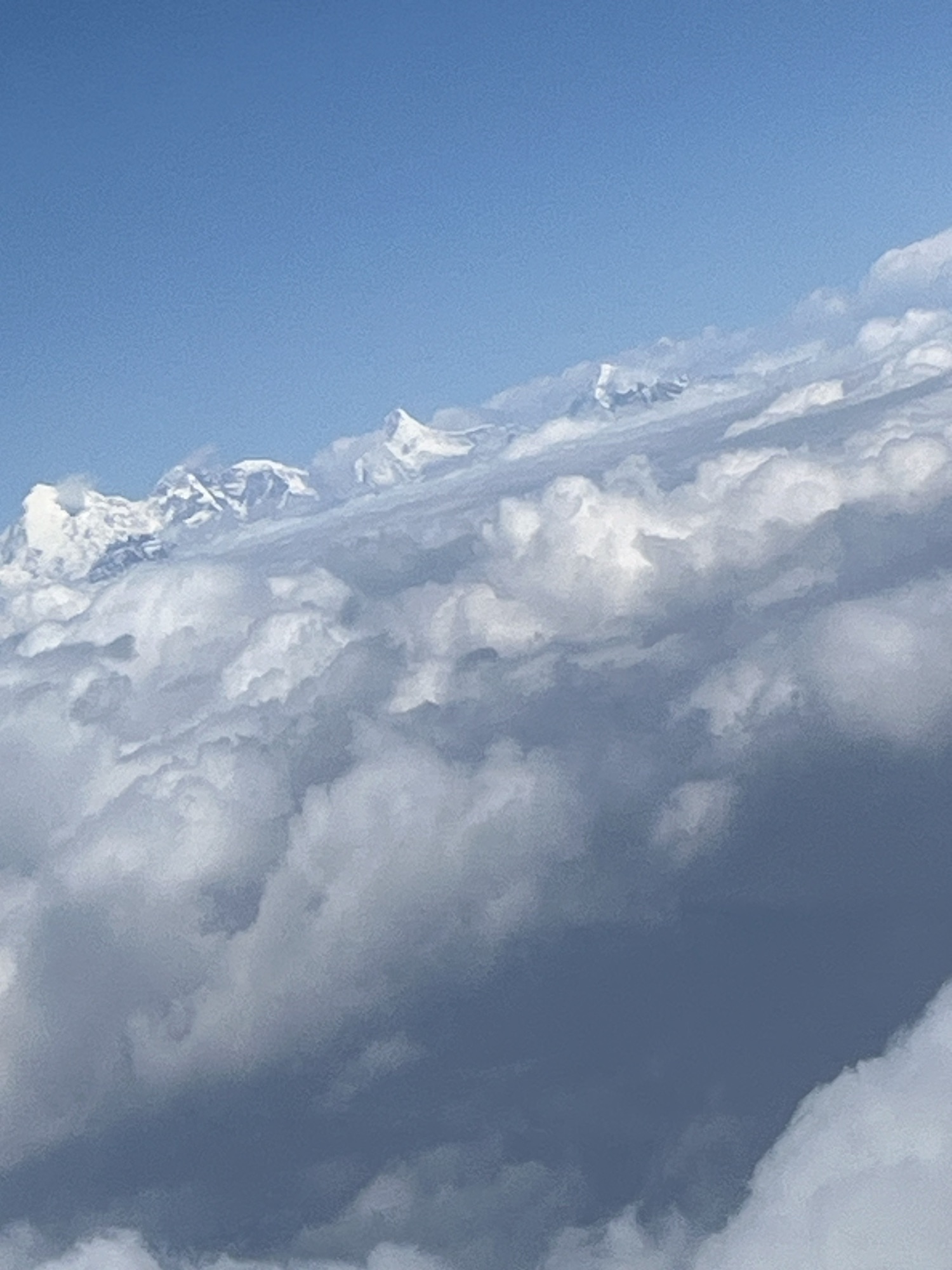
Mt. Everest in the distance. Pro tip: sit on the left side of the plane during landing and the right side on departure to view the mountain ranges.
Paro international airport gives you the first impression of the country. The building structure is vernacular and not made of steel and glass. The images of the king and his family are adorned everywhere and the interiors are richly painted with religious icons depicting Bhutanese beliefs.
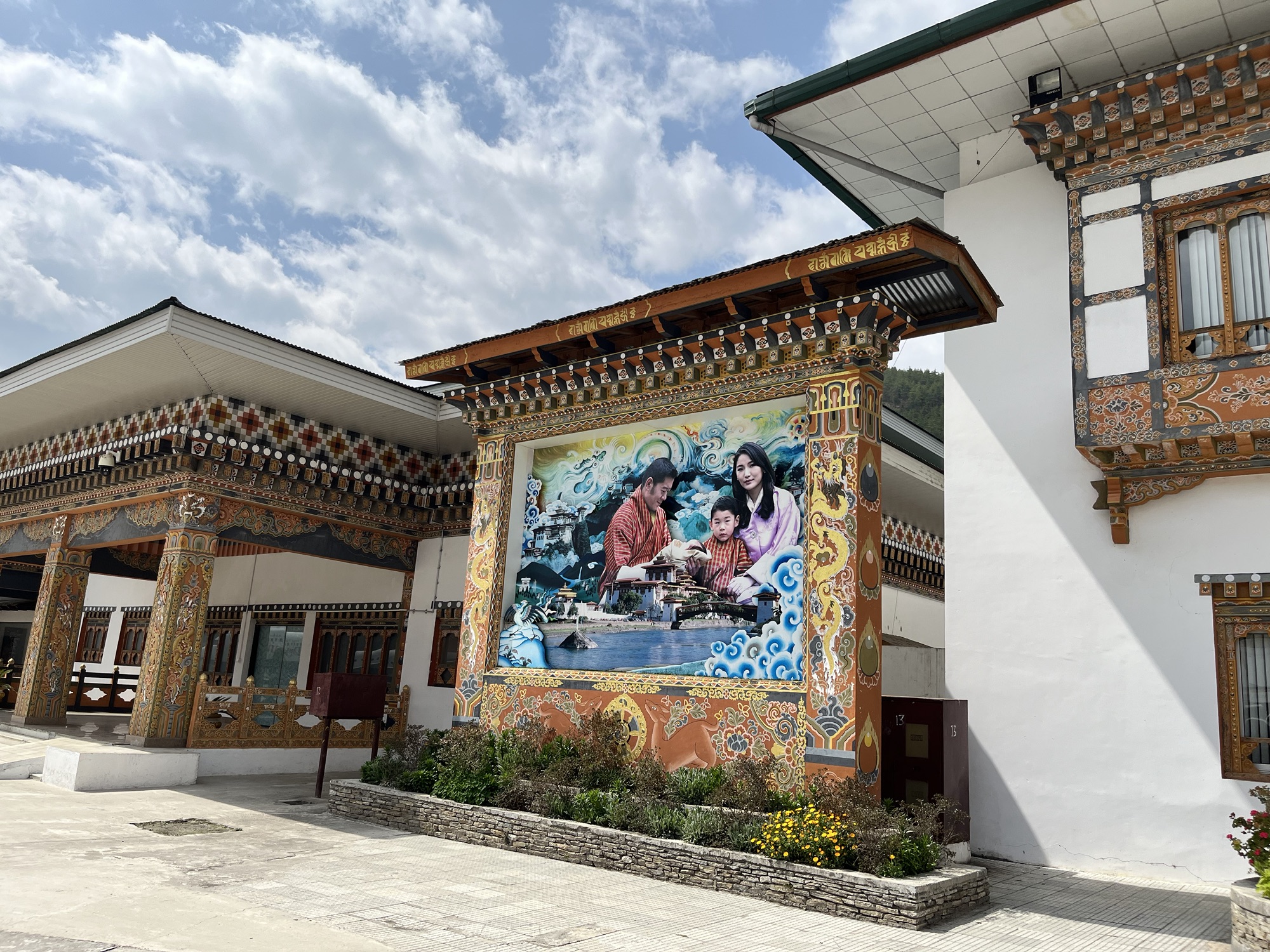


Once outside the terminal, the guides wait with beaming smiles in their traditional Gho to introduce you to the land of “Thunder Dragon”, for that is what Bhutan means.

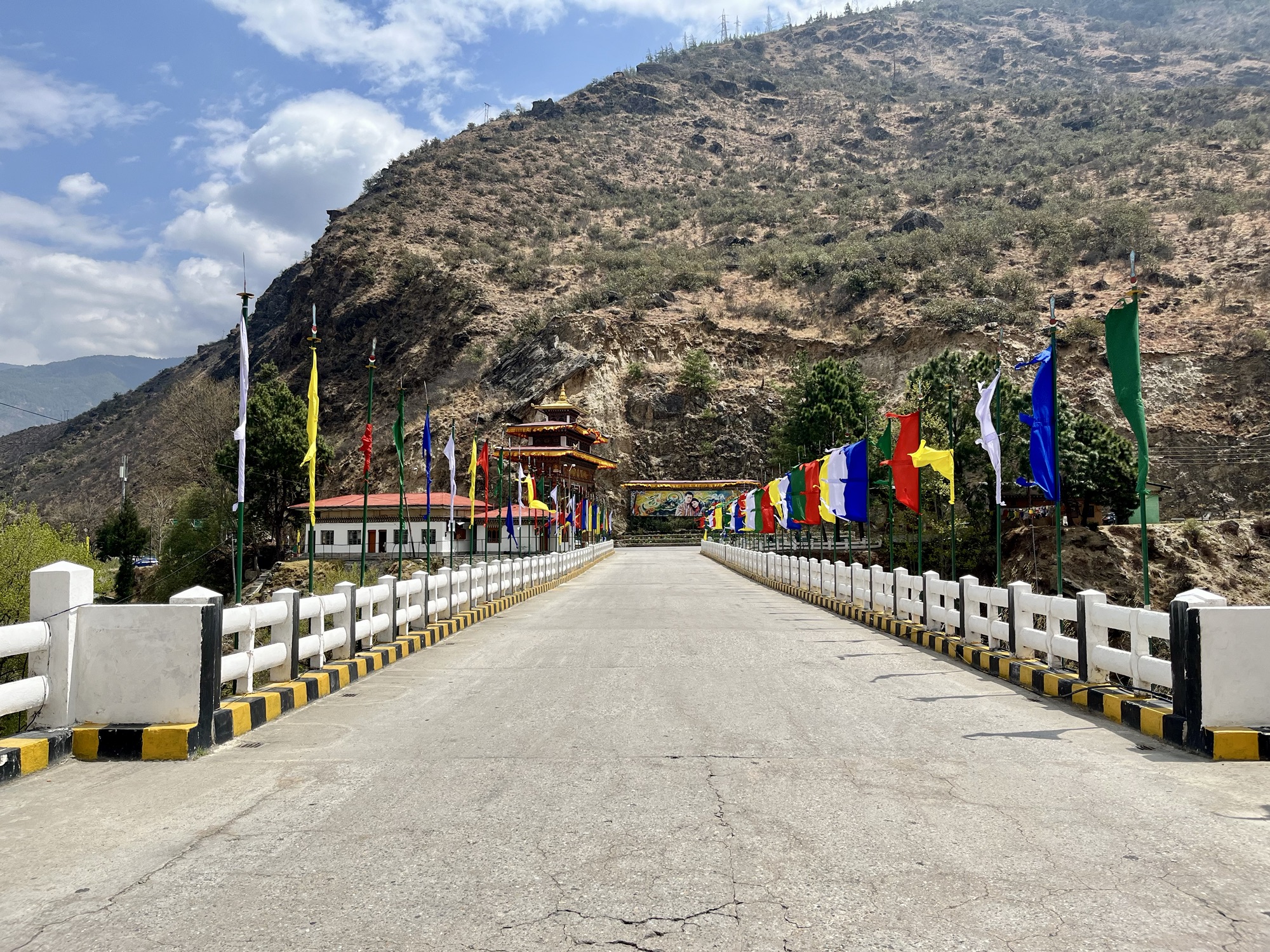
Thimphu
Thimphu is the capital of Bhutan. It is about 30 km from Paro Airport. There are no traffic lights here and the Bhutanese know how to navigate the traffic without a single honk or mis-turn.
Every home, hotel, bank, shop, hospital or educational institution and even the football stadium is built in the traditional Bhutanese architecture with windows, balconies and balustrades carrying images of clouds, dragon, the auspicious knot and lotus flowers. The facades of the buildings are almost always in bright colours like turmeric or pale custard yellow, saffron and even cornflower blue. The white colour is reserved for temples, Dzongs and monasteries.
On the facades of all buildings are emblems like the tiger, snow lion, phallus, Garuda (a mythical bird), dragon, mandala, thunderbolts and other motifs signifying Bhutan’s spiritual heritage.



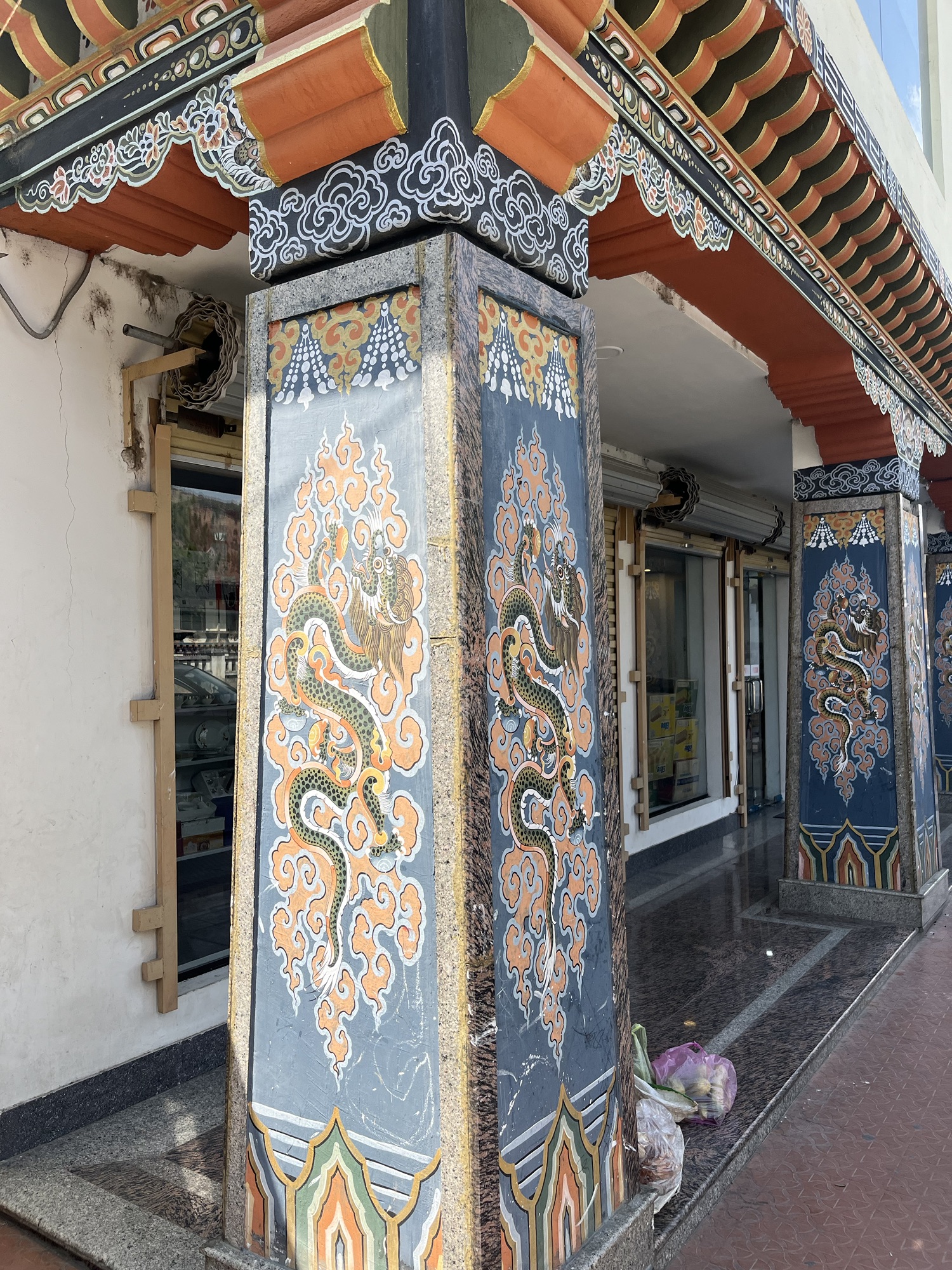
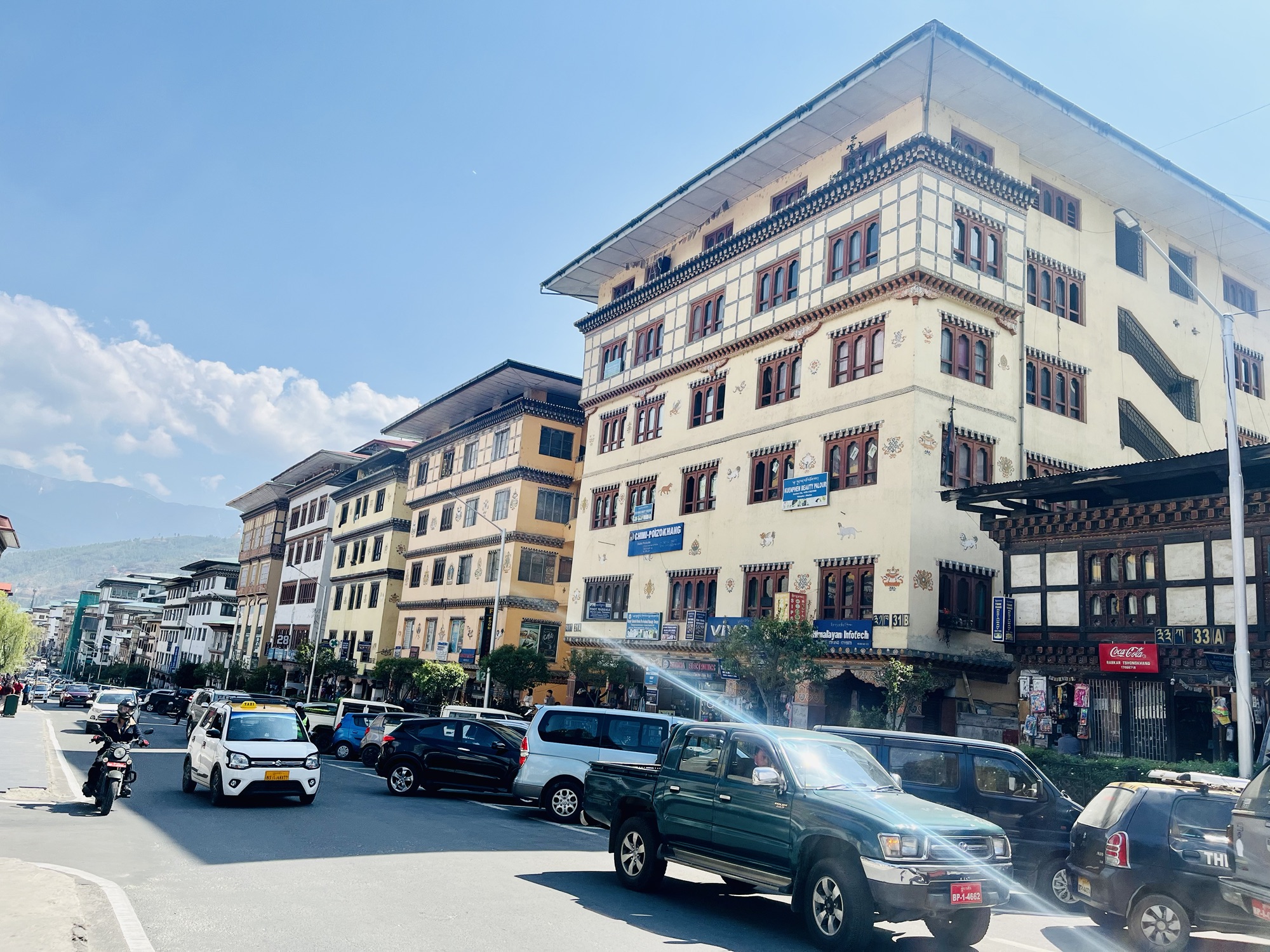
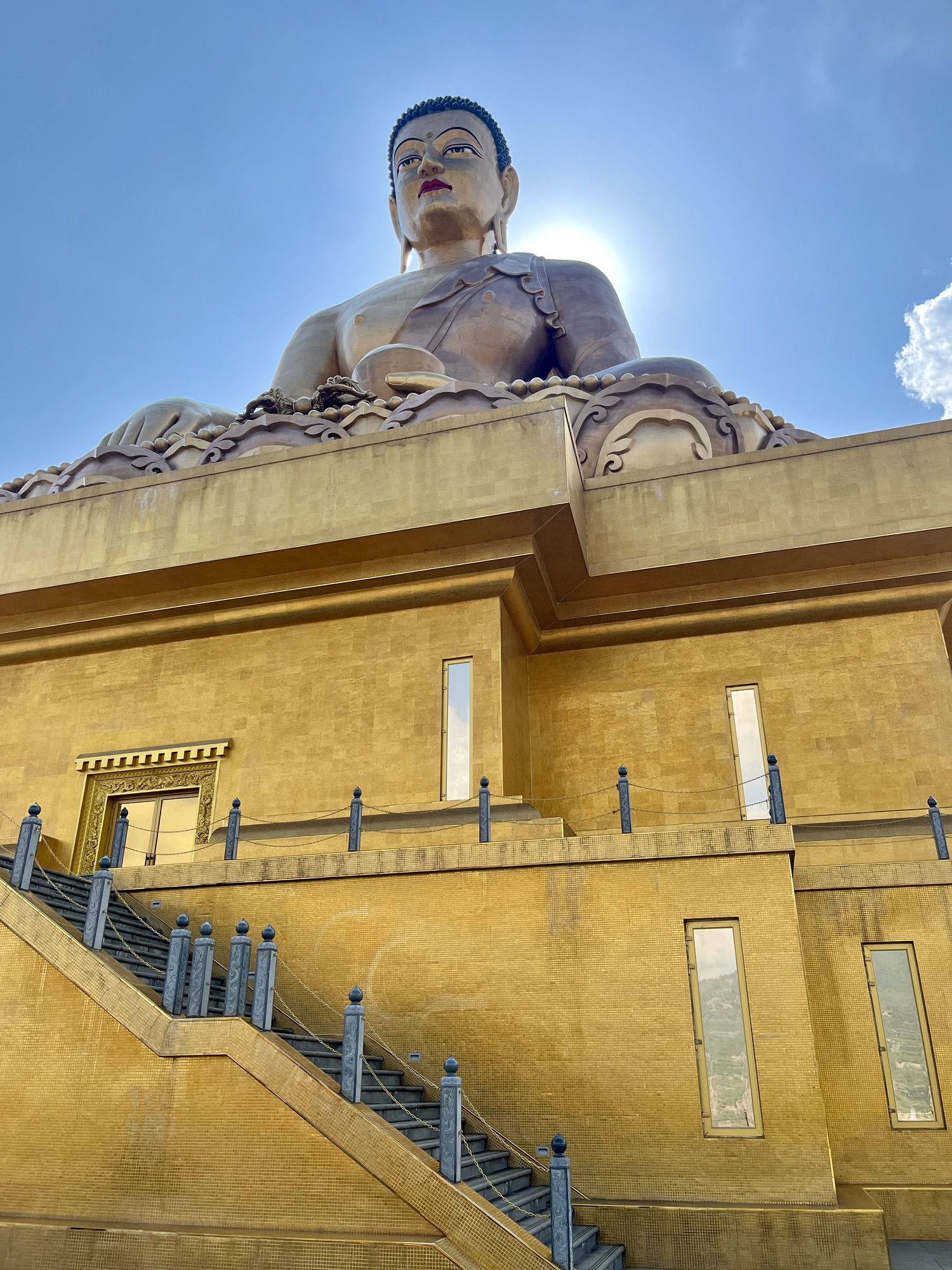
The Bhutanese are encouraged to wear traditional clothing and take pride in their heritage. Almost all women in Bhutan wear a Kira – a sarong-like skirt and a waist-length jacket held by a brooch. Men wear a Gho – an ankle-length robe that is folded upto knees and held with a belt, paired with knee-length socks and shoes.
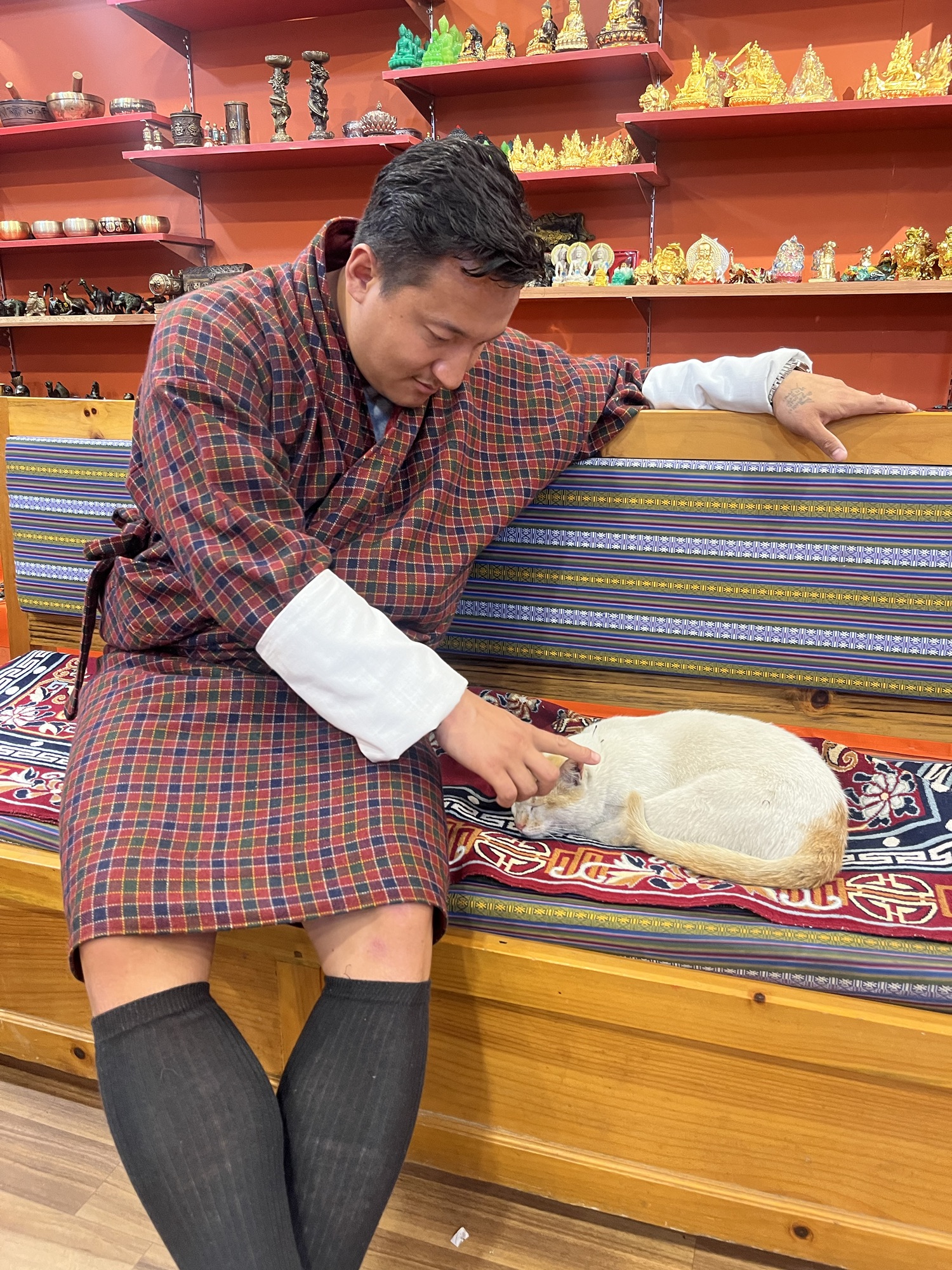
First up was a tour of the farmer’s market that acquainted us of the local produce like dried yak cheese strung in a garland and eaten as a betel nut, sacks and sacks of dried chillies, rice, fruits and other vegetables.
Almost all of the fresh produce is imported from India. What is indigenous is yak produce like milk and cheese, red rice which is grown in the valleys, some fruit like apples and wild strawberries, vegetables like chillies, wild ferns and cordycep mushroom that is highly prized in Japan and China.
English is widely spoken and the farmer’s market will bring you closer to the Bhutanese, their children and even their pets – in particular, cats. The Bhutanese love to chat and are extremely at ease with strangers.
Thimphu Dzong
Thimphu Dzong is next the list. Originally built in a vernacular Bhutanese architecture in 1216, it has been rebuilt over the years and is now the seat of the Bhutan government, housing the throne room, a temple, grounds for ceremonies and other parts reserved for important ceremonies.




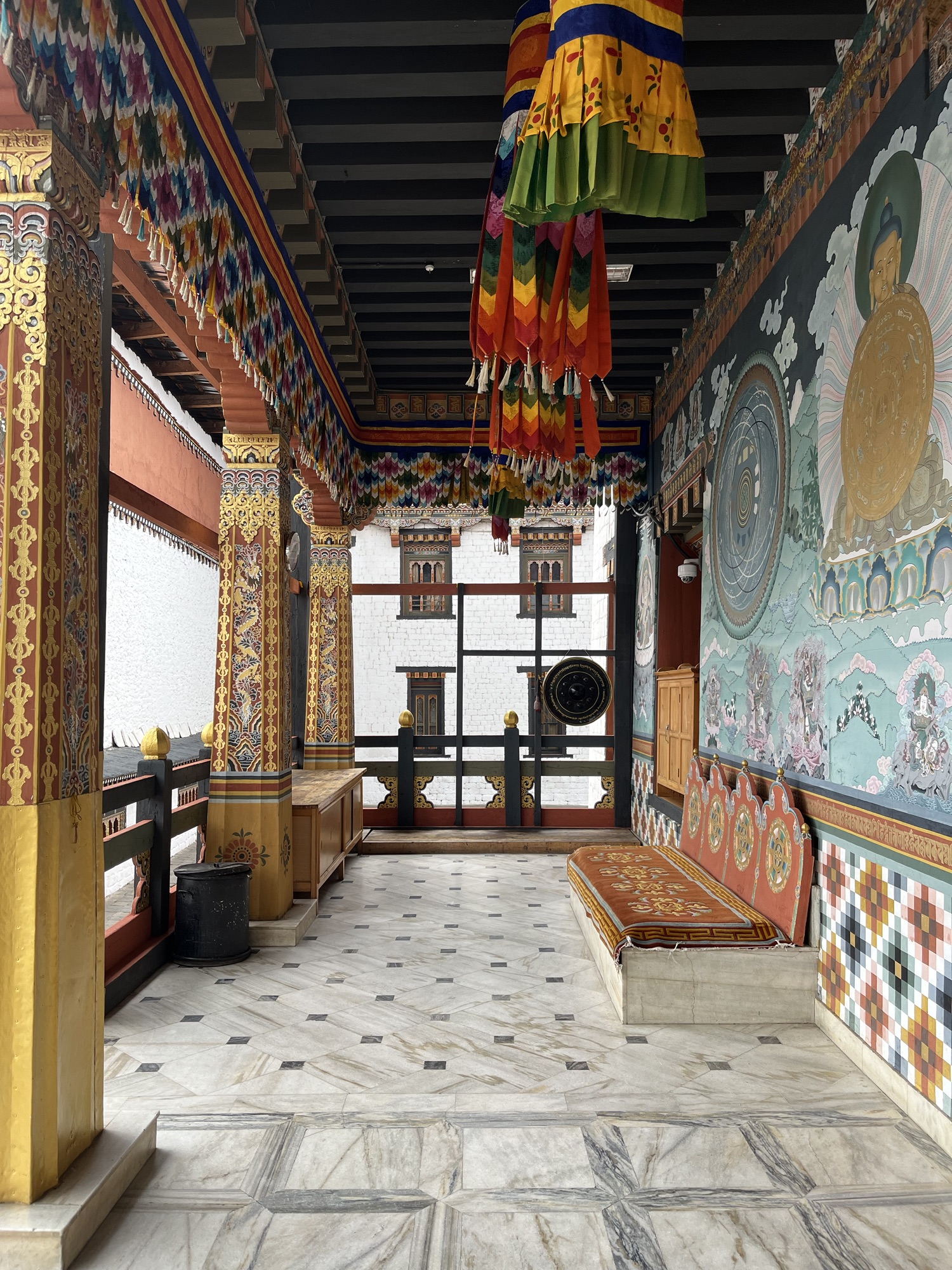
Archery
I am fairly certain taking up archery is a way to find happiness. There are many archery grounds in Bhutan and many even store targets, bows and arrows at home like you would do for a basketball or a tennis racquet.

Archery is a national sport of Bhutan. It is the only sport Bhutan sends its team for the Olympics. But it isn’t just a national sport, it is also a recreational activity, a personal hobby and a chance to sing and celebrate. At one of the archery grounds, the archers were busy jibing and teasing the opposition team that was at least 100 metres away from the target. A swoosh in the air followed by the landing of the arrow in the mud brought gleeful responses from the archers. But on occasion when the arrow hit the target the group gathered near the target and celebrated with a song and dance sequence. The skilled archers wear coloured sashes like red, yellow and white around their waists denoting the many successful hits.
Punakha
The old capital of Bhutan was Punakha which has one of the most beautiful Dzongs accessed via an old-fashioned bridge across the river. Built in 1637, it has a temple with 3 key figures: Lord Buddha, the second Buddha called Guru Rinpoche (known as Padmasambhava) who is considered an iconic figure in Bhutan, and the unifier or the bearded lama – Ngawang Namgyal who unified the various fiefdoms in Bhutan and gave it its unique identity separate from the Tibetan culture to which it owes its origins.


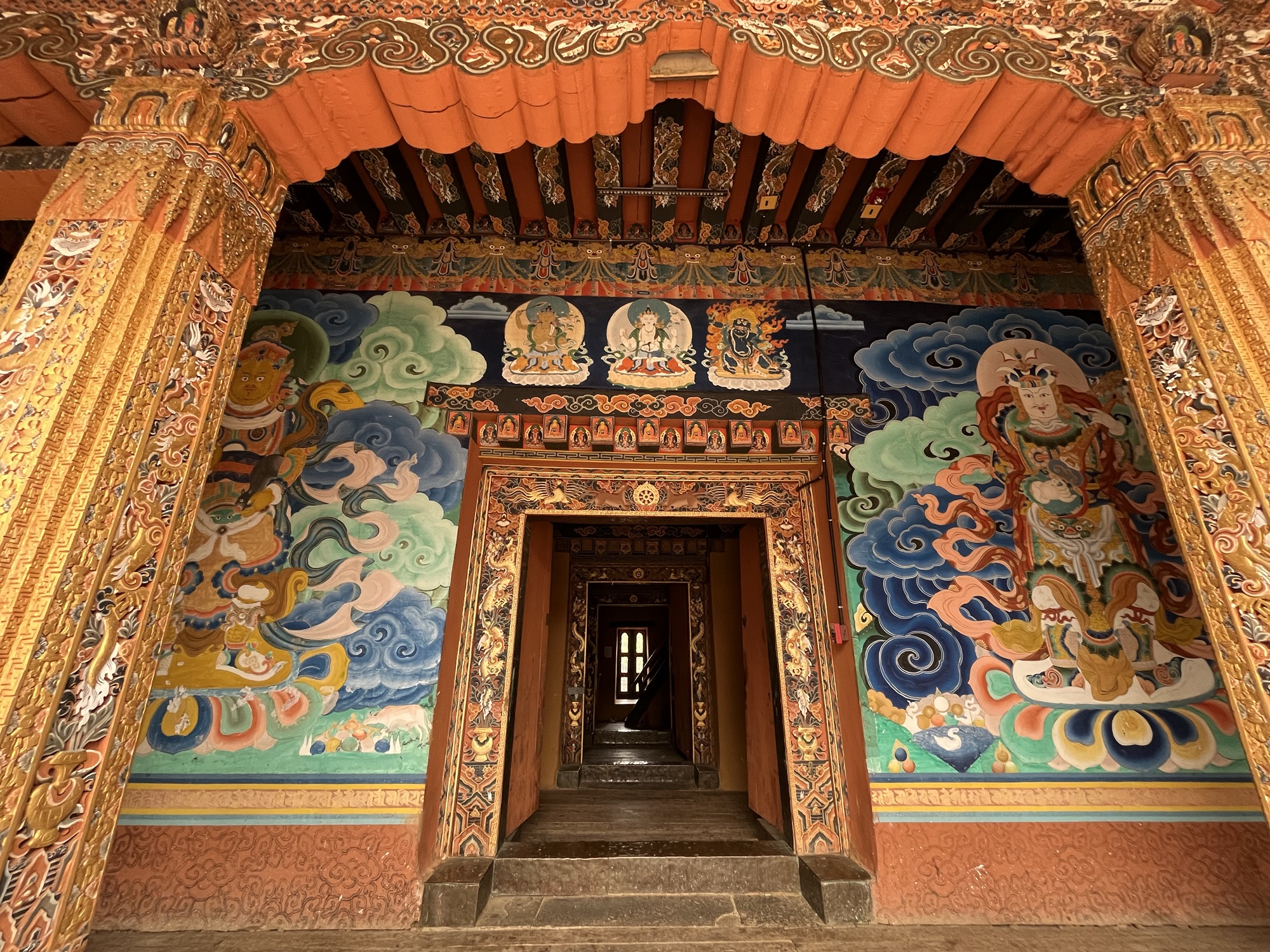
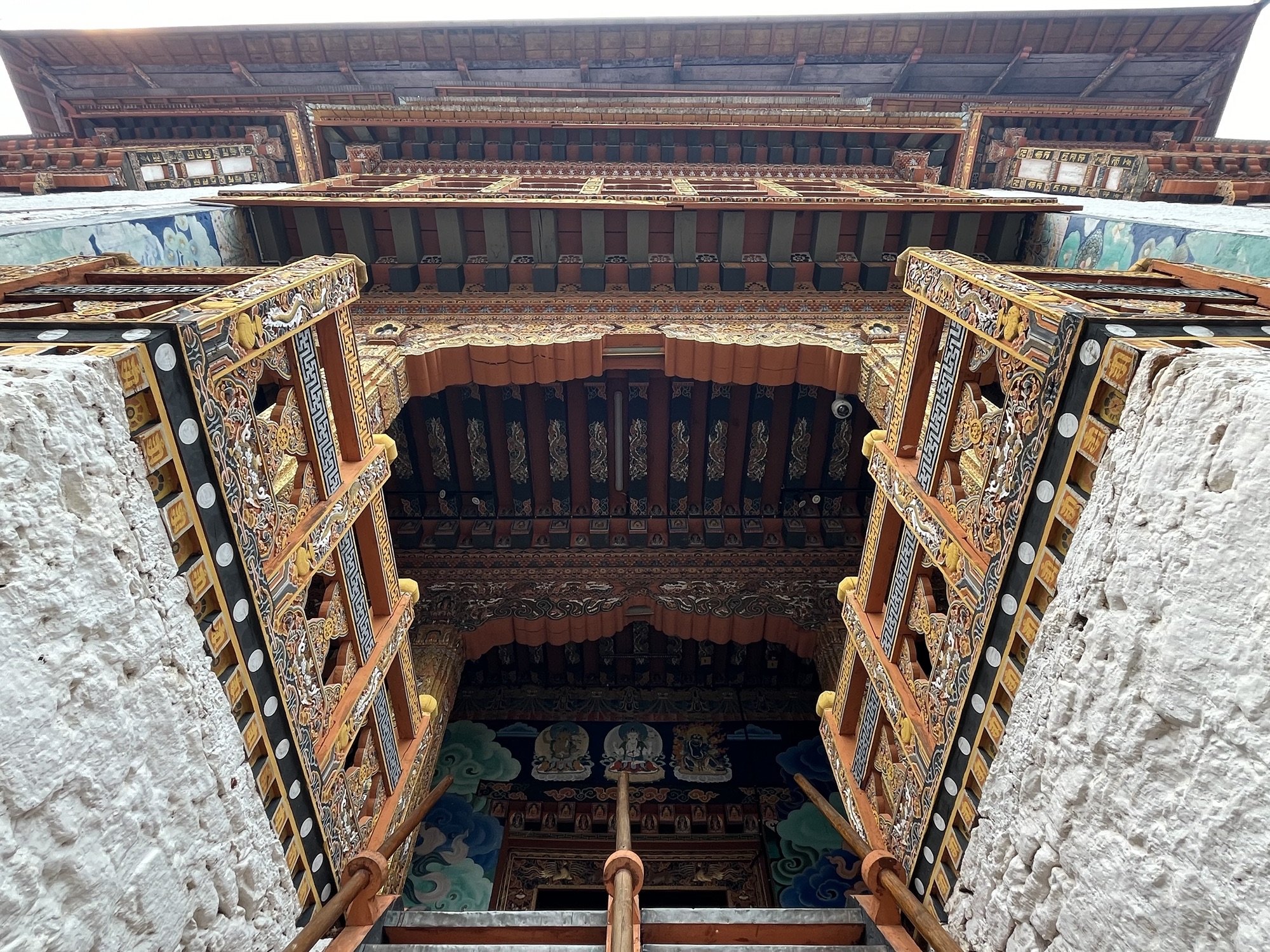
Punakha town is blessed with 2 rivers, which the locals call male and female rivers that generates hydroelectricity for Bhutan. Quite naturally, it alludes to fertility. At the edge of Punakha valley, is Chimi Lhakhang temple dedicated to fertility and a lore about the divine madman, Drukpa Kunley who grants couples desiring children their wish. Inside the temple is an album full of all those kids born from the fulfilment of their wish. All are named Kunley, after the monk.
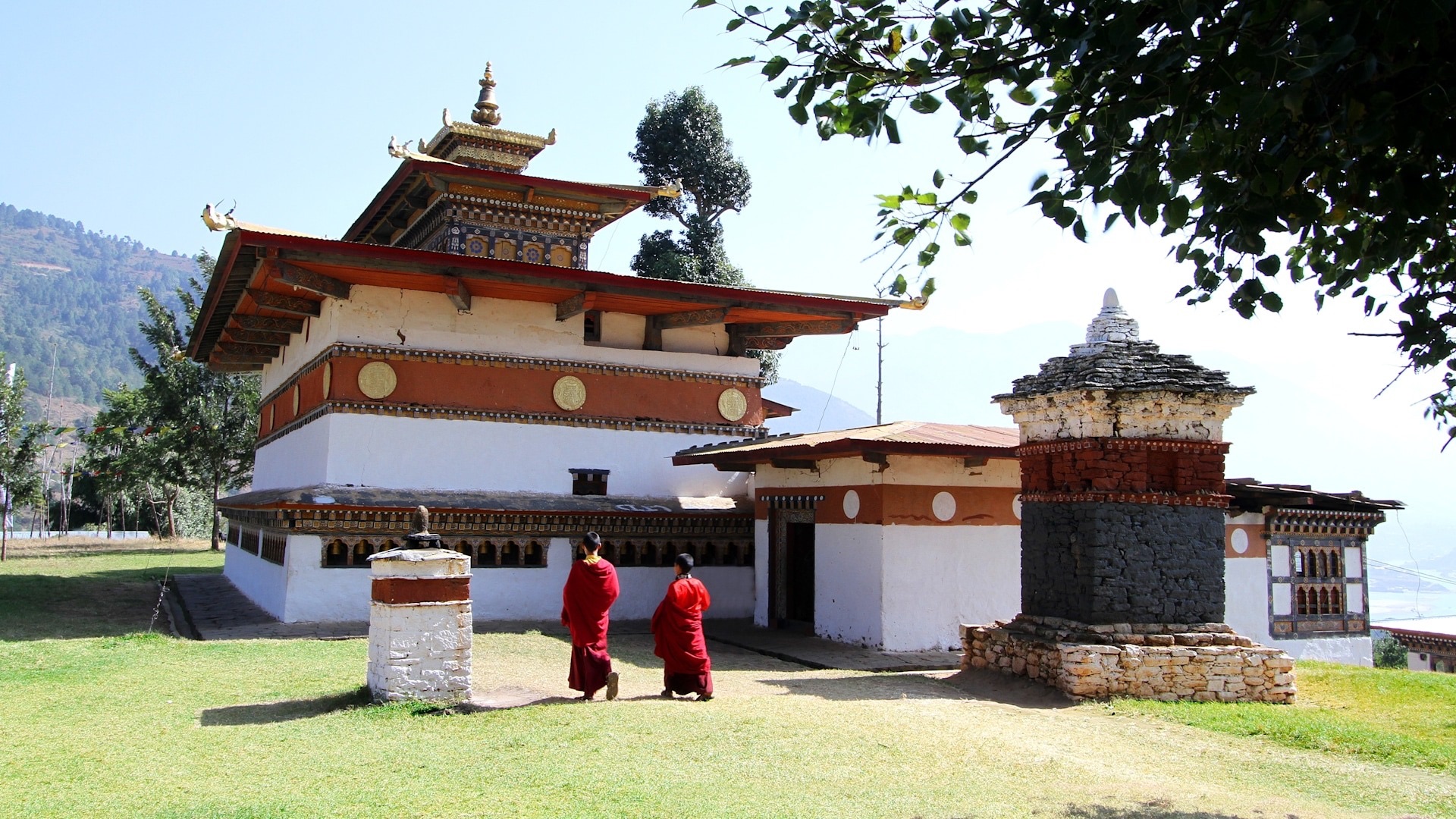
Others remember Punakha for its phalluses that adorn the walls of homes and also make their way to many other creations which the tourists find amusing like necklaces, candles, tees and wood carvings.



Dorchula Pass
The road between Thimphu to Punakha passes through Dorchula Pass, which is at an elevation of 3,100 metres. Queen mother Dorji Wangmo built 108 Chortems in honour of the former king of Bhutan, Jigme Singye Wangchuck who advocated the use of Gross National Happiness.
A large board here has a view of the mountains in the distance. Kanjendzonga rises above all though no one, including the locals have ever seen the full view of the mountains and I seriously wonder if the photographer ever saw the mountains he claims to have photographed sans mist.
So, all you do is take a picture of the mist-covered scenery with a Himalayan rhododendron tree in the foreground to remember the moment by.


Suspension bridge
The Punakha suspension bridge is the second longest suspension bridge in Bhutan. The 180 metres bridge across the male river Po Chhu is an adventure to say the least. I have been on far scarier bridges that cut across deep ravines; this one was mildly nerve wracking experience, primarily because the bridge is vulnerable to flash floods and sways a fair bit. The bridge connects the old administrative centre of Punakha Dzongkhag to the rest of the valley.


Paro
Tiger Nest Monastery
It takes a degree of mental preparedness to climb the Paro Taksang Monastery, commonly known as the Tiger Nest Monastery. Perched at 3120 metres, the monastery is one of the 13 Tiger’s nest caves spread across Tibet, with this one being in Bhutan. The abode of Guru Rinpoche is now home to 30 monks who reside within.
No amount of reading up on the hike or watching videos will prepare you for what lies ahead. And please don’t let Google fool you with “it’s a medium to moderate trek” balderdash. The hike is a 4-mile back and forth trip and it is challenging right to the top. The trail is a steep, dirt track with steps carved out of logs and along the way, you are the red Himalayan rhododendrons growing wildly amidst the blue pines.
Halfway up the monastery is a cafe where you can rest awhile. From here, you get your first clear glimpse of the monastery and you forget to swallow. The trail gets steeper from here and you pass thousands of prayer flags inscribed with sacred mantras acting like harbingers of good tidings to all those who pass under them.

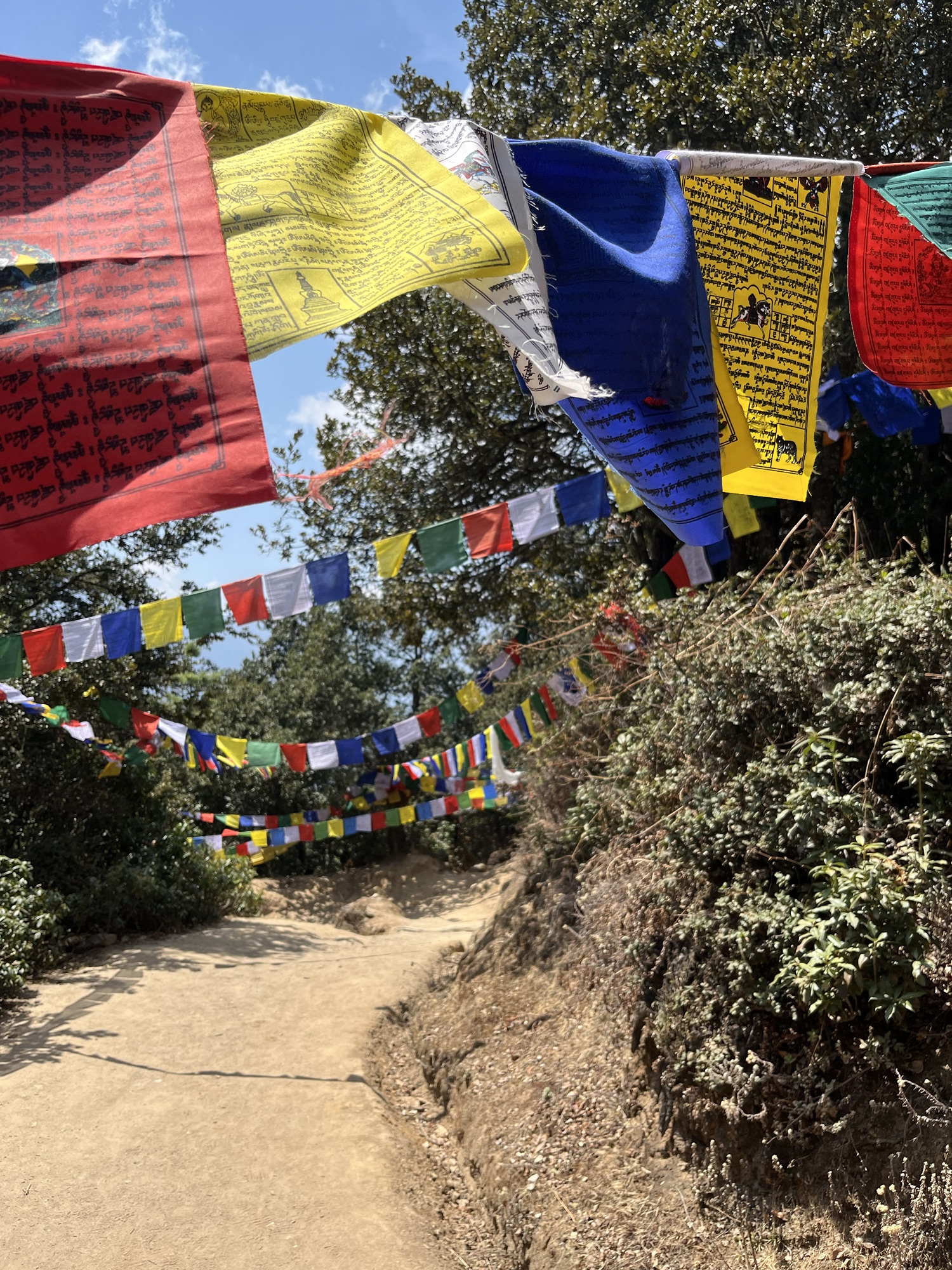
Apart from the thousands of steps you have climbed, the final climb to the monastery has a total of 700 steps – 400 descend into one cliff and 300 that ascend to the monastery.
The Taksang monastery is made up for different rooms and different temples. As you enter the sacred space, you understand why there are no ropeways or cable cars to bring you up here. It would simply deprive this space of the sacrosanctity that every Bhutanese holds so dear. You are forbidden to carry any camera equipment. So be it. All you carry back from the monastery are memories.
The hike back from the monastery is equally arduous. It took me 5 1/2 hours in total back and forth with a 10-min rest at the cafe on the way up and half an hour rest at the cafe on the way down. Challenging it is, but once you set on this hike, Guru Rinpoche will carry you all the way to his abode.
Hot stone bath
As a special treat for all those who climb the monastery (and also those who didn’t), there is the traditional hot stone bath that works wonders on your achey muscles and sore joints and also whets your appetite for the meal post the bath. Wooden tubs are filled with hot water from the heated river stones mixed with Himalayan herbs. Pour yourself a cup of the local rice wine, Ara and you can be sure to have achieved Nirvana.
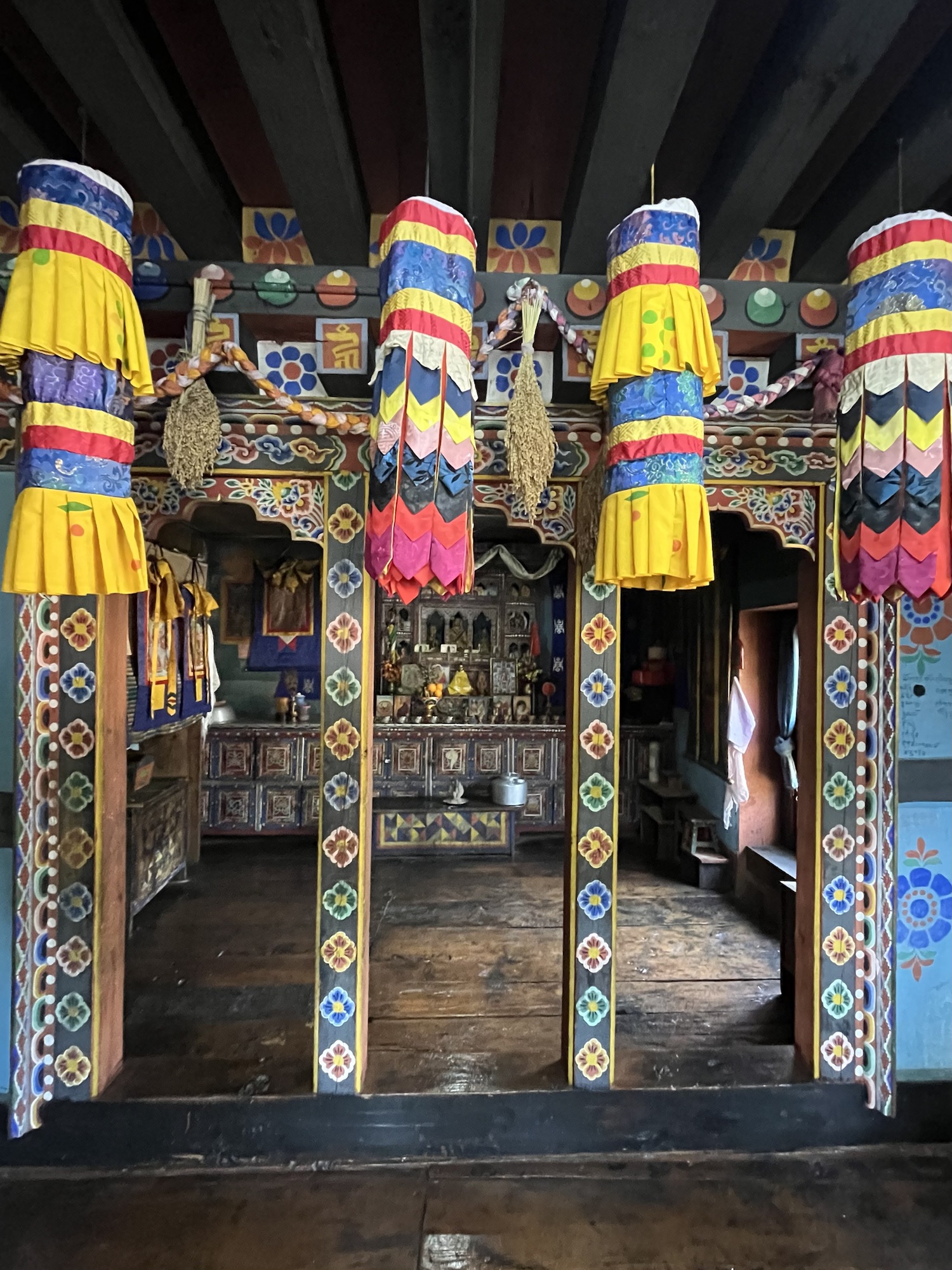



The week has almost come to an end and it is time to pack my bags and my memories with them. The few days of being in Bhutan feels like a page out of the film, Avatar. Just like the Na’vi, the Bhutanese are deeply spiritual, hold on to their traditions and have developed their own sophisticated culture. They have almost mastered the art of being happy.
As you take off from the magical land of Bhutan, the airplane momentarily transforms into a Toruk and you to fly on the wings of the dragon, above the clouds and making your way towards the snowy mountain ranges.
I am back home now but just like Jake, I am thirsting to return to the Pandoran world of Bhutan, learn to be in harmony with the nature and be learn to be happy.
Tashi Dalek.

How fantastic! Such a unique and rarely visited country, but it has so much to offer judging by your post! Quite funny but today I was just reading Aussie news about Bhutan and how so many young Bhutanese are coming here to study at our universities. Good to “see you” posting again! X
LikeLike
Yes, the Bhutanese are travelling a lot to Oz. My husband is from NZ and they didn’t know where it was so he conveniently said Oz and they all knew. Many are returning with their money from Oz and building homes in a locality which has now been called as Oz City. The king is now building a township to create jobs. It is a country with only 6-700,000 people and with most leaving to go to Oz, they are now thinking of creating jobs at home. Thank you always for your comments Anna. How is Uzbekistan planning coming?
LikeLike
How fascinating. Oz city! lol. That’s pretty crazy t hear! Uzbekistan is going great, I leave on July 8th and I’m all set! The dream is finally happening!!!! Xxx
LikeLike
Woohooo Anna. I can’t wait to read about your adventures. Will be keep a close eye on your blogs then. Yay buddy
LikeLiked by 1 person
You’ll be waiting a while, you know how slow I am!!! 🤣🥰
LikeLike
We’re all guilty Anna. I was actually in Sydney 3 weeks ago and didn’t write any blogs about my trip. It would have mostly been about birds I saw (kookaburras and cockatoos) and spending hours and $$$ in a spice shop in QVB and the great outdoors which only aussies could do justice to. Never got around to that. I want to ask you so many things about UZ but will wait for your blog.
LikeLiked by 1 person
You sure get around! I am going to Sydney end of the year, ill need to check out that spice shop!
LikeLike
: ))) went for work and stayed back to see my brother who lives there. As for the spice shop, I think it was this one: Gewürzhaus Spice House – Queen Victoria Building
+61 2 9052 6480
https://g.co/kgs/noyFpFu
Really fragrant spice mixes to inspire cooking. My sis in law is a keen cook and she really liked them. Where do you live, Anna? Think it was Cairns if I recall.
LikeLike
I live in Perth! Im on the best coast – the west coast! Lol. Do let me know if you ever come my way!
LikeLike
Ah yes I remember now. WA is beautiful. Hope to visit and for sure will let you know. 😊 If you are going via Singapore to UZ, let me know. It will be like pen pals meeting for the first time.
LikeLike
I couldnt find any flights through Singapore so am going via KL instead. Perth-KL-tashkent is the most direct route for me. A shame, as a penpal meet would have been lovely! We will definitely have more opportunities in the future, i can sense it! 😜
LikeLiked by 1 person
: )))) I can’t wait for that meeting. It will happen.
LikeLike